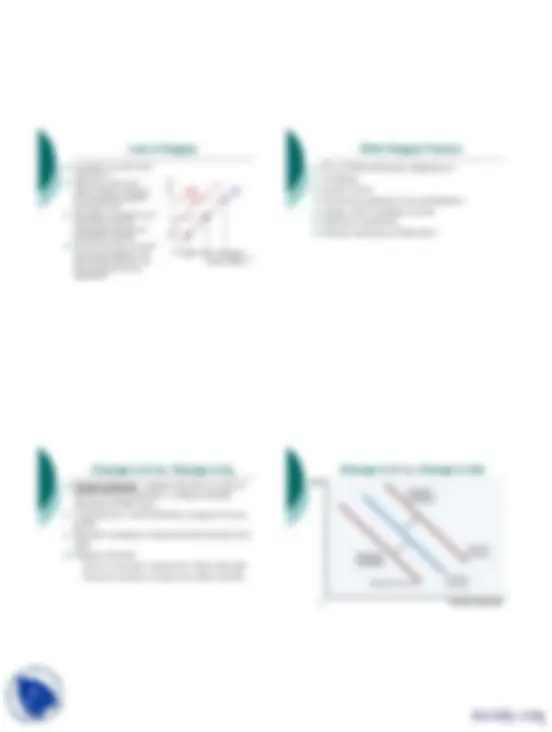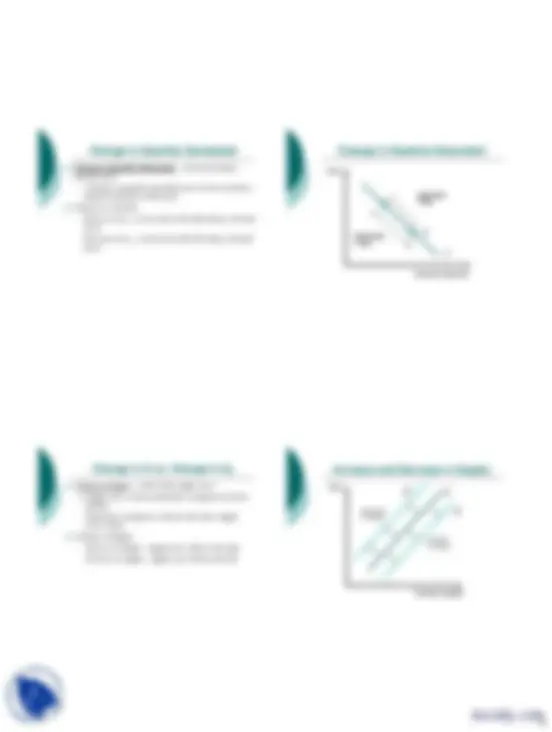





Study with the several resources on Docsity

Earn points by helping other students or get them with a premium plan


Prepare for your exams
Study with the several resources on Docsity

Earn points to download
Earn points by helping other students or get them with a premium plan
Community
Ask the community for help and clear up your study doubts
Discover the best universities in your country according to Docsity users
Free resources
Download our free guides on studying techniques, anxiety management strategies, and thesis advice from Docsity tutors
This lecture is part of lecture series for Engineering Economics course at M. J. P. Rohilkhand University. It was delivered by Dr. Badrinath Singh to cover following points: Demand, Supply, Analysis, Law, Market, Product, Service, Price, Substitute, Complement
Typology: Slides
1 / 5

This page cannot be seen from the preview
Don't miss anything!




A market is defined as a group of buyers and sellers of a particular product or service. Competitive markets are markets with many buyers and sellers, so that each has a very small influence on the price. Demand and supply is perhaps one of the most fundamental concepts of economics and it is the backbone of a market economy. The demand for a product is the amount that buyers are willing and able to purchase. Quantity demanded is the demand at a particular price, and is represented as the demand curve. The relationship between price and quantity demanded is known as the demand relationship. The law of demand states that, if all other factors remain equal, the higher the price of a good, the less people will demand that good and vice versa. In other words, the higher the price, the lower the quantity demanded. The amount of a good that buyers purchase at a higher price is less because as the price of a good goes up, so does the opportunity cost of buying that good. As a result, people will naturally avoid buying a product that will force them to forgo the consumption of something else they value more.
A, B and C are points on the demand curve. Each point on the curve reflects a direct correlation between quantity demanded (Q) and price (P). The demand relationship curve illustrates the negative relationship between price and quantity demanded. The higher the price of a good the lower the quantity demanded (A), and the lower the price, the more the good will be in demand (C).
Income: Generally, as income increases, we are able to buy more of most goods. When demand for a good increases when incomes increase, we call that good a “Normal good". When demand for a good decreases when incomes increase, then that good is called an “Inferior good”. Prices of related goods: Related goods come in two types, the first of which are "substitutes". Substitutes are similar products that can be used as alternatives. An increase in the price of a substitute will increase the demand for the good. A decrease in the price of a substitute will decrease the demand for the good. Examples Coke/Pepsi, and butter/margarine. Usually, people substitute away to the less expensive good.
Other related products are classified as "complements". Complements are products that are used in conjunction with each other. An increase in the price of a compliment will decrease the demand for the good. A decrease in the price of a compliment will increase the demand for the good. Examples pencil/eraser, left/right shoes, and coffee/sugar.
Consumer expectations: When you expect the price of a good to go up in the future, you tend to increase your demand today. Tastes and Preferences : Tastes are a major determinant of the demand for products, but usually does not change much in the short run. Population : If population of the country increased, it will lead to increase the demand and vice versa Number of Buyers : The more buyers in the market for a good, the greater the total quantity demanded of the good at a given price. Since the quantity demanded is higher at every given price, the demand has increased. The Availability of Credit : If it is easier to borrow money (credit cards have lower interest rates or are easier to obtain, etc.), do you think people will buy more or less of a good at a given price?
Supply represents how much the market can offer. The supply of a product is the amount that producers are willing and able to bring to the market for sale. Quantity supplied is the amount offered for sale at a particular price. The correlation between price and how much of a good or service is supplied to the market is known as the supply relationship.
Law of supply states that if all other factors being equal, as the price of a good or service increases, the quantity of goods or services offered by suppliers increases and vice versa. This implies that price and quantity supplied are positively related. Producers supply more at a higher price because selling a higher quantity at a higher price increases revenue.
Change in Quantity Demanded - movement along a demand curve
Increase in Qd Decrease in Qd Quantity Demanded Price
Change in Supply - a shift of the supply curve A supply curve is drawn under the assumption of ceteris paribus.
Quantity Supplied Increase in Supply Decrease in Supply Price
Change in Quantity Supplied (ΔQs) - movement along a supply curve
Quantity Supplied Increase in Qs Decrease in Qs Price